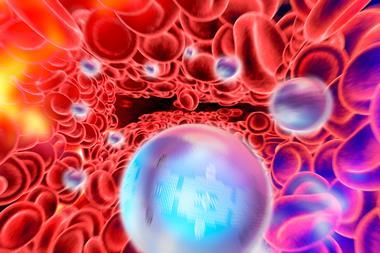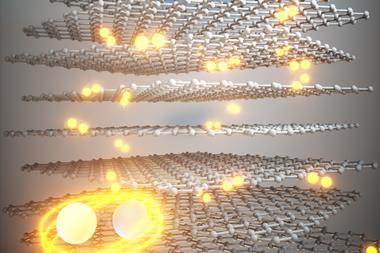Readers share how the Talent Project is supporting technicians, share a proposal for enhanced oil recovery, and more
Technician Talent
In her article ‘The history and the future of chemistry’, Catherine Jackson rightly calls out the importance of technicians and technical roles within research and higher education (HE), and notes the continued struggle they have for recognition. As she mentions, the UK’s Technician Commitment is helping to redress this balance.
Readers may be interested in the Talent Project, which is having an impressive impact for technicians within HE and beyond. Set up by the Midlands Innovation consortium of universities, Talent is building an understanding of future requirements for skilled technicians, collaborating to drive a change in culture, delivering training and development opportunities, and advocating for technicians within the UK HE sector.
In February 2022 the Talent Commission report was published, setting out a vision for technicians accompanied by 16 overarching recommendations to guide delivery of that vision. Talent has also initiated the Herschel Programme for Women in Technical Leadership, with over 550 graduates having already successfully passed through its doors.
The Talent Commission recommended a new entity to build on the Technician Commitment and the Talent Project. The UK Institute for Technical Skills and Strategy was launched in August 2023. It provides a permanent centre to champion and develop the role of technicians within the UK.
Technicians are the vital, and often unsung, life blood of UK science. Finally they are being taken seriously.
Simon FitzGerald FRSC
Advisory Board Member, Talent
A different view of AMR
The September issue of Chemistry World focused on the growing global challenge of antimicrobial resistance (AMR). This problem is progressively getting worse, and predictions for the future are bleak. While the associated articles were enlightening and hopeful, I was disappointed that non-pharmaceutical solutions capable of introducing preventative measures were overlooked.
Antibacterial properties have long been realised with materials modified with surface-grown/attached cationic groups or infused with metal-based additives. Often neglected, however, are the issues that bacteria can likewise develop resistance toward these approaches, which rely on targeting specific chemical groups, and that these approaches are not necessarily effective against microbes other than bacteria. We have sadly been reminded of the second point during the Covid-19 pandemic.
While medications capable of treating specific infections are critically important and all researcher efforts devoted to this cause must be applauded, we need to start thinking about more preventative strategies, other than point-in-time solutions such as disinfectants that pollute the environment and do not keep surfaces clean. Some antimicrobial advances can kill bacteria, viruses and fungi without the fear of AMR since their inactivation mechanisms are non-specific.
One example is photodynamic inactivation, which uses photosensitive additives that, in the presence of visible light and molecular oxygen, generate reactive oxygen species, such as singlet oxygen, to kill a broad spectrum of microbes. These additives can be incorporated into polymeric materials, added to polymer coatings or chemically attached to surfaces.
Another example consists of nanostructured anionic polymers that generate a highly acidic (pH<1) surface layer upon hydration. In both cases, inactivation to the level of minimum detection (typically 99.9999+%) can be achieved, with the latter reaching this level in just a few minutes. Self-sterilising surfaces such as these constitute alternatives capable of effectively preventing pathogenic proliferation in an eco-friendly fashion.
Richard Spontak, FRSC
Via email
Catalysing visions
Metallocenes less exciting than graphene? Not only was the ferrocene structure so startling that Robert Woodward was accused of having been ‘at the hashish’ for proposing it, the chemistry of metallocenes was so fertile that within two decades it had given rise to a new generation of catalysts, still used today for producing millions of tonnes of polymers.
The discovery that graphite can be peeled apart into single layers was certainly interesting. But after two decades, and millions of pounds of research funding, anyone still seeing exciting ‘new possibilities’ for graphene must surely be on something considerably more hallucinogenic than hashish.
Steve Boyde MRSC
Teesside, UK
A new take on enhanced oil recovery?
I’ve been thinking on and off for the past 30 years about this topic. A long time ago it drove me into mental illness and destroyed my career. But I’m a Scot and don’t give up easily. My part research proposal follows:
As the ternary phase prism for oil, water and amphiphile evolves with temperature a three phase region is transited between the lower limit (Tl), and the upper limit (Tu). At the mid temperature point (Tm), there is a drop in interfacial tension (IFT). If a vial containing the three phases is shaken at Tm, a drainage pattern is observed where there appears to be equal wetting of both oil and water phases with the middle phase as the continuous phase.
The seminal work on glycol ether amphiphile, oil and water ternary systems was carried out by the late Manfred Kahlweit and co-workers at the Max Plank Institute, Gottingen. Germany. His published work, and my own researches while at BP, allow selection of a glycol ether/glycol ether mixture to be positioned at any given point on the phase prism, and for any fixed temperature, salinity, effective carbon number of oil, pressure etc. At Tm this produces a twenty-fold reduction in oil-water IFT which is insufficient to mobilise oil in a reservoir setting.
There is now an inventive part two to my proposal which I am prepared to disclose within the terms of a non-disclosure agreement. If of interest, please contact me through the good offices of the Royal Society of Chemistry.
Nevin Stewart FRSC
Guildford, Surrey
Chemistry World welcomes letters, which should be concise (normally fewer than 300 words) and timely. Those selected for publication are subject to editing for clarity and length. Letters should be marked ‘for publication’ and sent to chemistryworld@rsc.org
We do not routinely acknowledge letters.












No comments yet